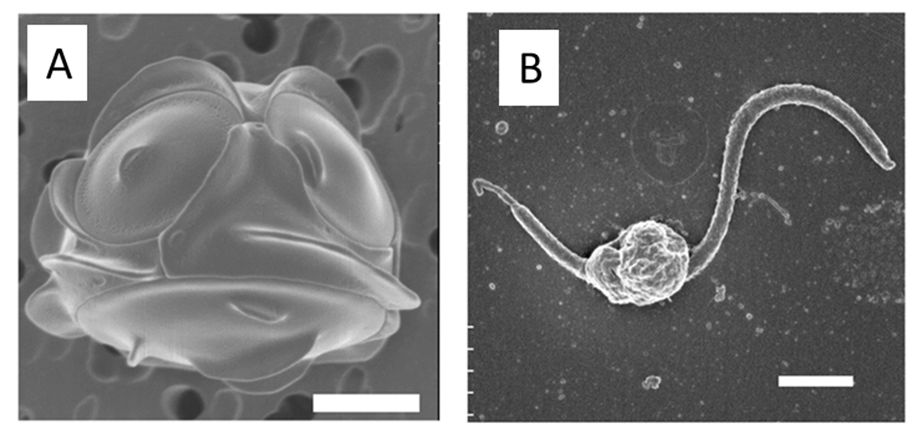Bolidophyceae, the sister group of diatoms

Late in the 1990’s, naked flagellated cells (previously called Bolidomonas, A) were isolated and described as belonging to the class Bolidophyceae. The silicified Parmales group (B) was discovered and observed in marine waters back in the 1970’s but their taxonomic affiliation was an enigma until the isolation of one Parmales strain in 2011 when by DNA sequence identity Bolidophyceae and Parmales were thought to be sister classes or even organisms within the same class. In our study (Ichinomiya and Lopes dos Santos et al., 2016), we acquired sequence data from strains of both groups to analyze the evolutionary relationships among several silicified and flagellated cells isolated from different oceanic regions. We were able to confirm that the silica covered cells belong to the same Class (Bolidophyceae) than the naked flagellated cells, suggesting that Bolidophyceae may have a life cycle with motile flagellated and non-motile silicified stages. Our data allowed to determine the distribution of the major Bolidophyceae taxa across the world oceans using metabarcoding data set obtained in the frame of the Tara Oceans expedition. We observed that silicified cells are mostly found in cold-water while the naked flagellate have temperate and tropical distributions.
Collaboration